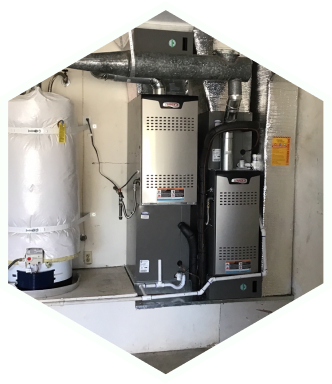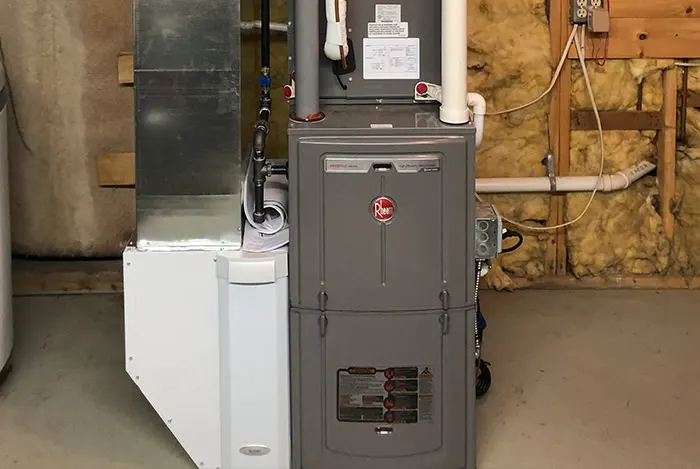Same-day furnace repair for safety and peace of mind: Get fast and trusted help
Same-day furnace repair for safety and peace of mind: Get fast and trusted help
Blog Article
The Ultimate Guide to Heating System Setup for a Cozy Home
Heating system setup is an essential element of maintaining a comfortable home setting, particularly during the cooler months. Recognizing the various types of heating systems available and the importance of choosing the proper size can considerably influence both efficiency and comfort levels. Additionally, a complete installation process, complemented by the right devices and materials, makes sure optimal efficiency. This overview aims to furnish property owners with the understanding required to make informed decisions and implement effective upkeep methods. As you consider these aspects, the question remains: what steps can you take to guarantee your heating system offers you well for many years to come?
Types of Heating Systems
When thinking about furnace setup, recognizing the various kinds of furnaces available is essential for making an educated choice. The primary kinds of heaters include gas, electric, and oil heating systems, each offering distinctive advantages and considerations.
Gas heaters are one of the most usual choice as a result of their performance and reduced operational prices. They make use of gas or lp, supplying quick heating and regular efficiency, making them excellent for cooler environments.
Electric furnaces, while normally less complicated to set up and keep, tend to have higher functional expenses. They are frequently preferred in locations where gas service is not available or for homes with existing electric infrastructure.
Oil heating systems, though much less usual today, remain a viable alternative in certain areas. They melt home heating oil, which can be helpful during cooler months, however their reliance on oil distribution presents prospective difficulties.
In addition, there are high-efficiency versions available throughout these kinds, which can considerably lower energy consumption and energy bills. Inevitably, recognizing these furnace kinds will certainly aid house owners choose a system that lines up with their home heating requires, spending plan, and energy preferences.
Picking the Right Size
Choosing the ideal size for a heating system is important to making certain optimum performance and energy effectiveness. An undersized heater will certainly have a hard time to preserve comfy temperature levels throughout the chilly months, causing enhanced deterioration, higher power expenses, and prospective system failing. Conversely, a large heating system might cycle on and off also frequently, leading to inefficient home heating and irregular temperature level circulation within the home.

Furnace sizes are usually determined in British Thermal Devices (BTUs), which show the quantity of energy needed to heat up a room. It is a good idea to seek advice from with a qualified HVAC expert that can execute the necessary calculations and suggest an appropriately sized device. furnace repair. Buying the right furnace size not just improves comfort but additionally adds to lasting energy savings and system integrity
Installment Process Overview
When the ideal heating system dimension has been determined, the following step entails comprehending the installation process. This process typically begins with a detailed assessment of the installation site, including the existing ductwork and ventilation systems. Correct planning is vital to ensure seamless integration and optimum efficiency of the brand-new heating system.
The installment usually consists of detaching the old unit, which entails safely getting rid of any kind of electric connections, gas lines, and ductwork connected to the previous heating system - furnace repair. Once cleared, the new furnace is thoroughly positioned and leveled, making certain that it satisfies the supplier's requirements for ideal procedure
Next, the installer will attach the required gas and electrical lines, adhering to neighborhood codes and safety policies. Following this, ductwork may need to be customized or changed to fit the new system, ensuring reliable air movement throughout the home.

Vital Devices and Products
Collecting the important devices and products is important for an effective furnace setup. Correct prep work guarantees that the installation procedure is effective and decreases the potential click here to read for errors.
Secret devices needed consist of a drill, screwdrivers, wrenches, pliers, and a level. A multimeter is necessary for electrical links, while a pipeline cutter and flexible wrench are needed for gas line installment. Additionally, a measuring tape and a stud finder will assist in making certain accurate placement and secure fastening of the heating system.
In regards to materials, you will need ductwork, insulation, and securing tape to ensure optimal airflow and energy effectiveness. It is also important to have a new heating system filter on hand, together with airing vent products, such as PVC pipeline or metal flue, depending on the kind of furnace being installed.
Safety equipment, including handwear covers, safety glasses, and a more information face mask, is additionally important to secure versus dirt and debris during installment. Having all these devices and products readily offered not only enhances the process yet additionally enhances the security and performance of the furnace setup.
Maintenance Tips for Long Life
To ensure the longevity of your heater, it is necessary to execute a normal upkeep routine that attends to read this article essential components of the system. Start by replacing or cleaning the air filter every one to three months, as a stopped up filter can restrict air flow and reduce efficiency. Furthermore, examine and clean up the blower setting up to stop dust build-up that can hinder efficiency.
Following, examine the thermostat setups and alter if needed to make sure exact temperature level regulation. Inspect the ductwork for leakages or blockages, as this can lead to power loss and uneven home heating. Regularly lube the motor and bearings according to the manufacturer's referrals to decrease damage.
Professional assessments must take place yearly, where a certified professional can examine the heater's total condition, look for gas leakages, and make sure that security attributes are working properly. Ultimately, consider setting up a programmable thermostat to maximize power use and preserve constant home temperature levels. By taking on these upkeep methods, you can improve your heating system's performance, prolong its life-span, and ultimately delight in a relaxing and comfortable home environment.
Verdict
Reliable heater installment is essential for achieving optimal home comfort and energy efficiency. Recognizing various heating system types and picking the ideal size makes sure appropriate capability.
Report this page